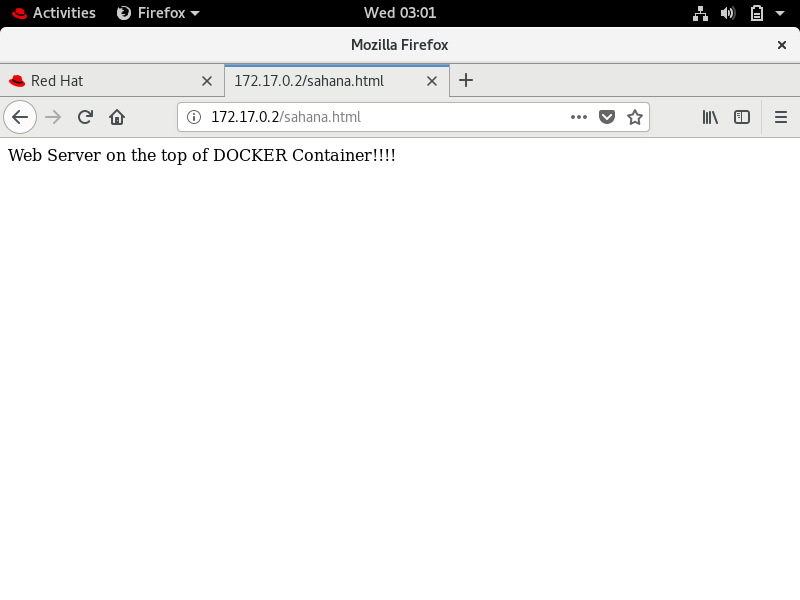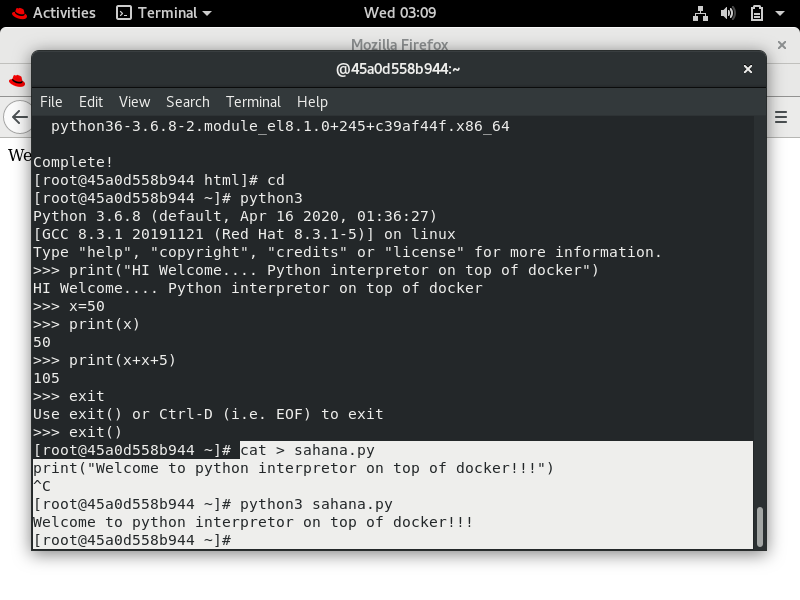Configuring HTTPD Server and running Python code on Docker Container…

What is Docker?
A Docker container image is a lightweight, standalone, executable package of software that includes everything needed to run an application: code, runtime, system tools, system libraries and settings, that makes it efficient in terms of space as well as time!
PART 1: Configuring HTTPD server on Docker Container…
STEP 1:
How to install Docker on Linux OS (RHEL 8)?
→First go inside the yum repo directory using the cmd,
cd /etc/yum.repos.d/→Then create a filename called docker.repo and write the following lines,
[docker]
baseurl=https://download.docker.com/linux/centos/7/x86_64/stable
gpgcheck=0

→ Then run the yum repolist command to check that your docker repo is successfully created and configured.

STEP 2:
yum install docker-ce --nobest -y

The best possible version (by using — nobest) of docker has been successfully installed!!! We can run docker --version cmd in order to confirm the successful installation.
STEP 3:
Start the Docker Service in your base OS
systemctl start dockerCheck the status (active/inactive) by using systemctl status docker

Launching Docker OS
In order to use Docker OS, we need to pull a Docker image,
docker pull centosdocker images

docker run -it — name webserver centos:latest
Now we are inside our Docker OS (Centos)!
Configuring Apache server on top of Container
STEP 1:
yum install httpd
STEP 2:
Go inside /var/www/html using cd cmd, and create a file and put some content..
→ Now we need to start httpd service and for that we need to use the following command since systemctl start httpd doesn’t work in container OS
/usr/sbin/httpd
Service has been successfully started!!


Configuring httpd on docker is Successfull!!!
PART 2: Setting up python interpreter and running a python code!
STEP 1:
yum install pyhton3

Python Successfully installed!!!
STEP 2:
You can either run the Python interpretor by using python3 cmd or create a small .py file run python3 filename.py.. In either way your python code is successfully running on your docker container!!!


Conclusion:
We’ve successfully installed docker, configured HTTPD service on top of docker and finally set up the python interpreter and got the output by running a simple python code!!!!

